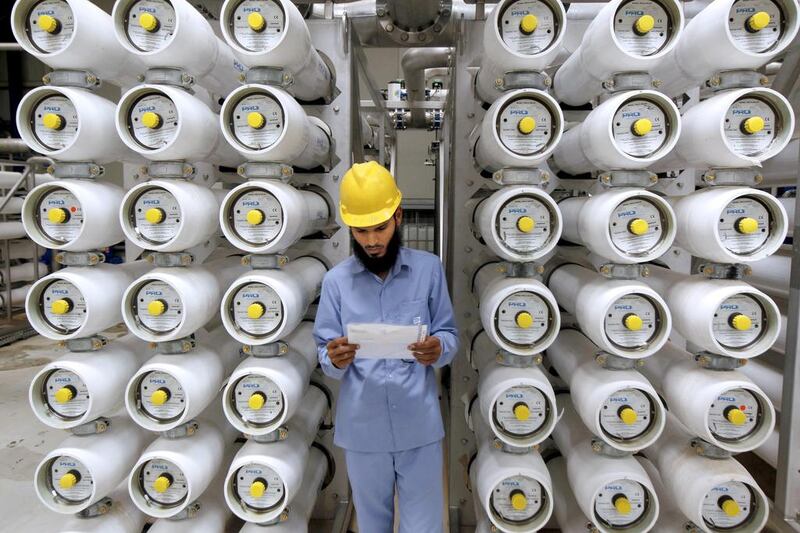Approximately 2.8 billion people are currently affected by water scarcity. In response to this challenge, desalination has become the most important source of water in a number of parched regions, particularly the Middle East and North Africa. In fact, the Middle East alone accounts for about 38 per cent of global desalination capacity.
Turning saline water into potable water may sound like a miracle of modern technology. However, the desalination process is also energy-intensive. It is estimated that the operational desalination plants worldwide emit around 76 million tonnes of carbon dioxide per year. And with the Organisation for Economic Co-operation and Development predicting that desalination is set to grow at a rate of 10 per cent per year, this thirst for energy is set to grow.
Significantly, as more energy is produced to power desalination, even if no action is taken the sector’s emissions are expected to grow to at least 218 million tonnes of carbon dioxide per year in 2040.
In other words, simply relying on conventional energy sources for desalination cannot be a sustainable model. For example, Saudi Arabia consumes an estimated 3.3 million cubic metres of desalinated water per day, from plants powered using 1.5 million barrels of oil per day.
In order to address this imminent problem and encourage the implementation of financial incentives to reduce the sector’s intensity, the Global Clean Water Desalination Alliance was announced during the 2015 Paris climate conference.
Spearheaded by Masdar and the International Desalination Association, the alliance’s goal is to seek solutions that will reduce the projected increase in emissions from the desalination process, as global demand for drinking water continues to grow. This is an important new development that recognises that water, energy and climate change are inextricably linked and that mitigation strategies must address the water-energy issue.
The alliance’s action plan could lead to a decrease in carbon dioxide emissions. This will be achieved by supplying at least 10 per cent of the annual energy demand of existing water desalination plants with newly installed clean energy sources, including solar, by 2030. With its operational efficiencies, we expect photovoltaic (PV) solar to shoulder the bulk of the desalination industry’s energy needs.
PV’s suitability comes down to a number of reasons: first, it has the lowest water consumption footprint in the energy generation process.
According to the International Energy Agency, energy production alone accounts for some 15 per cent of the world’s total water withdrawal, which amounts to an estimated 580 billion cubic meters of freshwater per year.
In fact, thermoelectric power plants already account for over a third of freshwater withdrawal in the United States, where the volume is even more than the water used for agriculture. We can all agree that it makes little sense to desalinate water only for a significant portion of it to be consumed for the production of energy to power the desalination plants.
Secondly, the world’s most water-scarce regions also have some of the highest irradiance levels. The abundance of sunlight, combined with aggressive technology improvements and cost reductions have made solar PV one of the most affordable generation sources in regions such as the Middle East.
The region is already establishing new benchmarks in cost, with the second phase of the Mohammed bin Rashid Al Maktoum Solar Park in Dubai set to generate solar electricity at a record-breaking tariff of $0.058 [Dh0.21] per kilowatt hour. When you consider that energy consumption can account for almost 30 per cent of the cost of desalinated water, the availability of low-cost clean energy makes it hard to justify burning fossil fuels to generate electricity.
Finally, PV solar’s scalability makes it an easily deployable energy resource, with multi-megawatt power plants being built in a matter of weeks and months.
It is my hope that solar-powered desalination will become ubiquitous.
Dr Raed Bkayrat is a vice president at First Solar, a founding member of the Global Clean Water Desalination Alliance





